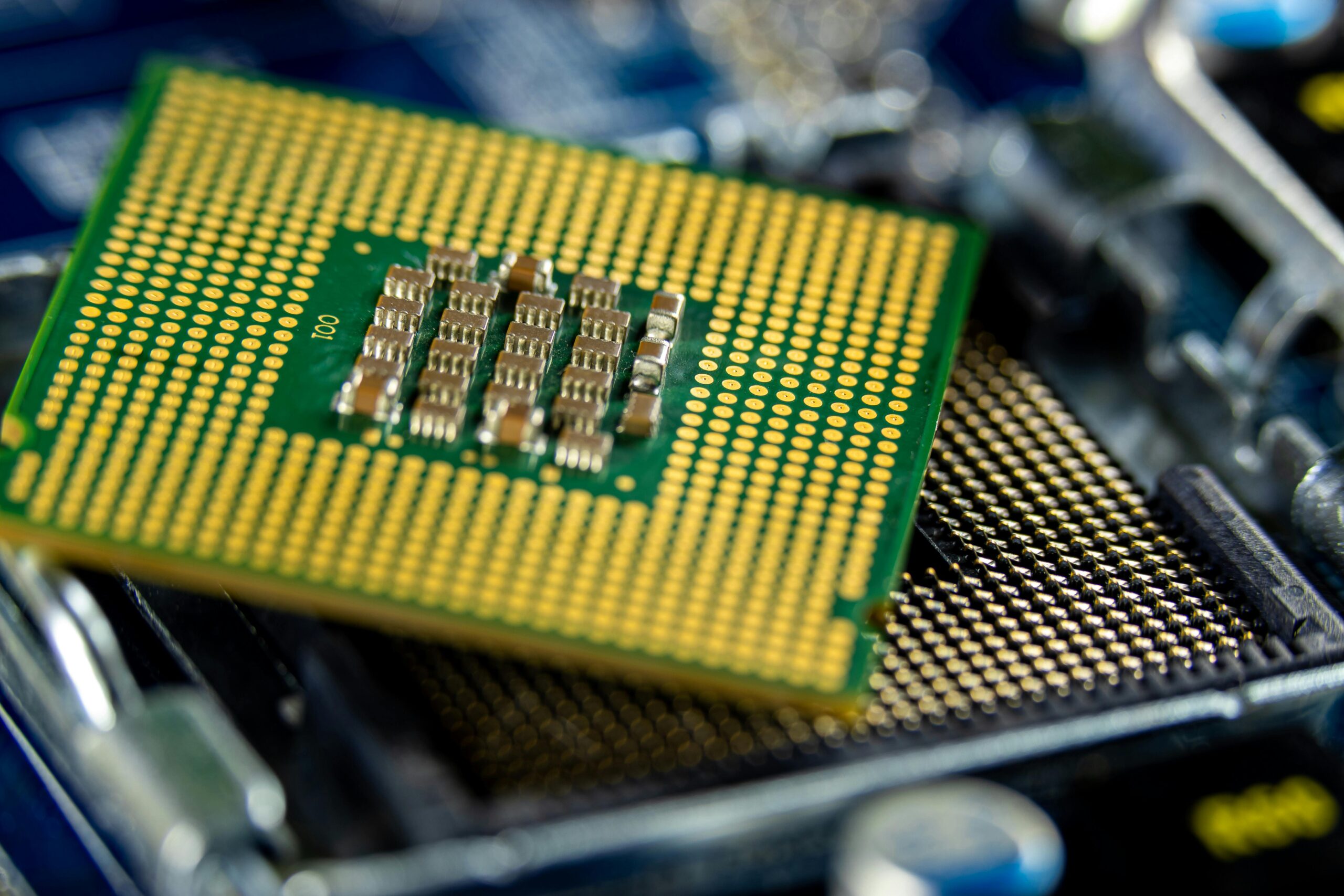Executive summary
- Broadcom stock AI networking 2025 thesis: Broadcom is positioned as a major AI-infrastructure supplier through networking silicon, semiconductors and software after the VMware acquisition; AI-related revenue accelerated materially in FY2025.
- Latest headline metrics: Q3 FY2025 revenue $15.952 billion, +22% YoY; GAAP net income $4.14 billion; adjusted EBITDA margin ~67% of revenue.
- Balance-sheet and leverage: TTM revenue ≈ $59.93 billion; total debt ~ $64.2 billion, stockholders’ equity ~$73.3 billion; debt-to-equity ≈ 0.88 by reporting metrics.
- Catalysts and risks: VMware integration and productization of VMware Private AI Services expand software monetization, while aggressive VMware pricing and customer pushback present churn risk.
- Verdict: Broadcom (AVGO) offers a differentiated AI-networking exposure with scale and margin advantages, but valuation, integration execution and geopolitical supply constraints create asymmetric outcomes for investors.
Summary fundamentals
- Latest quarter revenue (Q3 FY2025): $15,952,000,000.
- Revenue YoY % (Q3 FY2025): +22 percent year-over-year.
- Latest quarter GAAP EPS (Q3 FY2025): GAAP net income $4,140,000,000; diluted GAAP EPS reported in release.
- EPS YoY %: GAAP net income improved versus prior-year period driven by higher revenue and adjusted items.
- Gross / adjusted margin: adjusted EBITDA of $10,001 million in latest comparable quarter (~67% of revenue).
- Debt-to-equity (latest filings): total debt ≈ $64.2 billion; total stockholders’ equity ≈ $73.3 billion; debt/equity ≈ 0.88.
- Market capitalization / TTM revenue: market cap ~ $1.55–1.63 trillion; trailing twelve-month revenue ≈ $59.93 billion.
Detailed fundamental analysis
Revenue trends and AI networking growth
Broadcom’s FY2025 revenue trajectory shows a clear uplift from AI-driven networking and software. Q3 FY2025 revenue of $15.952 billion represented 22 percent YoY growth and Broadcom reported that AI-related revenue increased sharply (investor commentary quantified AI-generated revenue around $5.2 billion in the most recent quarter). This illustrates that a meaningful and growing portion of Broadcom’s top line is tied to AI infrastructure spend among hyperscalers and cloud providers.
Networking products-including switching ASICs, adapters and AI-optimized interconnect-moved from a secondary contribution to a central revenue driver as hyperscalers accelerated deployments of large language model clusters and GPU racks that require high-bandwidth, low-latency switching silicon. Broadcom’s product mix now pairs high-margin software (post-VMware acquisition) with semiconductor revenue that benefits from scale economies.
Margin drivers and profitability profile
Broadcom’s adjusted EBITDA margin in the latest comparable quarter was approximately 67 percent of revenue-a level driven by significant software and infrastructure pricing power and strong gross margins on its core ASIC portfolio. Broadcom’s ability to extract high ASPs for networking silicon and to capture recurring software economics via VMware increases consolidated margin resilience relative to pure-play chip peers. Continued margin expansion depends on sustaining high-value hyperscaler contracts and managing amortization and integration costs tied to recent acquisitions.
Balance-sheet strength and capital allocation
Broadcom carries substantial debt following large strategic acquisitions, with reported total debt around $64.2 billion offset by strong cash generation and equity of roughly $73.3 billion. Broadcom’s net leverage is material in absolute terms but supported by robust free cash flow and low working-capital intensity in its semiconductor and software businesses. The company’s Form 10-Q and subsequent filings reflect reduced acquisition-related amortization over the latest quarters as certain intangible assets fully amortized, improving operating-expense comparability.
Valuation multiples (TTM & forward)
With market capitalization in the $1.55–1.63 trillion range and TTM revenue near $59.93 billion, Broadcom’s EV/Revenue multiple sits in the high teens to mid-20s depending on the exact EV calculation (enterprise value ≈ market cap + debt − cash). Public feeds show Broadcom’s EV/Revenue elevated as markets price software and AI-networking optionality into the valuation. Investors should decompose valuation into semiconductor hardware, software (VMware), and AI networking growth buckets rather than applying a single multiple.
Momentum & technical snapshot
- RSI(14): neutral-to-moderate readings across technical providers; recent 14-day RSI reported near 48–54 depending on feed.
- MACD status: several aggregators show a positive MACD (MACD above signal), indicating constructive short-term momentum.
- 50-day & 200-day SMA positions: 50d SMA ~ $314; 200d SMA ~ $244; current price trading above both averages, indicating medium-term bullish trend on moving-average criteria.
- 1-month return vs Nasdaq: Broadcom has materially outperformed the Nasdaq Composite year-to-date in 2025 as AI optimism drove a sector re-rating, but short-term pullbacks have occurred around macro events.
- Average daily dollar volume: AVGO exhibits very high liquidity (tens of millions of shares traded daily), supporting large-block institutional execution.
Interpretation: technicals show momentum but mixed overbought/neutral signals across providers-appropriate for traders to use tight risk controls given valuation sensitivity.
Peer comparison
Direct peers for AI-networking and semiconductor exposure include NVIDIA (NVDA) and Marvell Technology (MRVL).
- NVIDIA Corporation (NVDA): NVIDIA reported Q2 FY2026 revenue $46.7 billion with Data Center revenue $41.1 billion; NVIDIA is the dominant AI-accelerator vendor and a competitor in high-performance networking (Mellanox acquisitions historically). NVIDIA’s gross margins and platform value are higher but Broadcom competes on networking ASICs and software integration.
- Marvell Technology, Inc. (MRVL): Marvell reported Q2 net revenue $2.006 billion, up 58% YoY, and GAAP gross margin ~50.4%; Marvell is a direct networking silicon peer with growing hyperscaler custom silicon wins but operates at a smaller scale than Broadcom.
Comparison takeaway: Broadcom combines scale comparable to large-cap NVIDIA in aggregate revenue and cash flow (but with different product mixes), while Marvell is a smaller, faster-growth networking chip competitor; Broadcom’s VMware software business also differentiates its margin profile versus pure-play silicon peers.
Latest earnings highlights & management guidance
- “Revenue of $15,952 million for the third quarter, up 22 percent from the prior year period.”
- “GAAP net income of $4,140 million for the third quarter and adjusted EBITDA of approximately $10,001 million, or 67 percent of revenue.”
- “Broadcom will continue to invest in AI-related R&D and expand VMware private cloud and AI services in VCF 9.0.”
Each quote is taken directly from Broadcom investor materials and press releases.
Strategic moves, catalysts & risks
Strategic moves and catalysts
- VMware integration and productization: Broadcom has embedded VMware Private AI Services into VMware Cloud Foundation (VCF) 9.0, positioning VCF as an AI-native private cloud stack for enterprise and hyperscaler customers. This tight integration is a revenue and margin catalyst as private-cloud AI demand increases.
- Hyperscaler networking wins and AI contracts: Broadcom reported rapid growth in AI-generated revenue and announced large customer engagements and supply deals driving near-term backlog and revenue visibility. Analyst coverage projects substantial AI chip market share gains for Broadcom through 2030.
- Ecosystem partnerships: partnerships with Canonical and other cloud-native tool providers to optimize VMware Cloud Foundation for AI workloads demonstrate go-to-market expansion in the enterprise AI stack.
Material risks (from filings and reporting)
- Pricing and customer retention risk: multiple reports indicate Broadcom’s VMware pricing strategy prompted customer pushback and potential migration to competitors such as Nutanix, which presents churn risk for the software book if aggressive pricing erodes renewals.
- Integration and amortization: Form 10-Q disclosures show large acquisition-related amortization and historical restructuring charges; while some intangible amortization has declined, integration execution and any future asset write-downs remain risks.
- Geopolitical and supply constraints: export controls, foundry allocation and geopolitical tensions can restrict Broadcom’s ability to serve certain customers or force inventory adjustments, which would ripple through revenue recognition for networking silicon.
All strategic items and risks are supported by Broadcom press releases, SEC filings and independent reporting.
Valuation & scenario analysis
Inputs used: TTM revenue ≈ $59.93 billion; market cap ≈ $1.55–1.63 trillion; total debt ≈ $64.2 billion; cash and short-term investments per disclosures.
Valuation method: split EV approach – value core semiconductor hardware business on a conservative EV/Revenue band and value VMware/software on a higher EV/Revenue or EV/EBITDA band, then derive implied share-price ranges.
- Conservative scenario – Price target $260: Assumptions: AI demand normalizes, hardware ASPs compress, VMware revenue growth slows due to customer churn; market re-rates to an aggregate EV/Revenue ~18× on forward revenue; downside driven by multiple compression. Rationale: integration friction and macro risk.
- Base scenario – Price target $380: Assumptions: Broadcom validates sustained AI networking growth, VMware integration stabilizes, and Broadcom trades at EV/Revenue ~25× reflecting software+silicon mix and FCF durability. Rationale: earnings and cash flow meet street expectations with steady margin expansion.
- Optimistic scenario – Price target $560: Assumptions: Broadcom captures large incremental AI market share, VMware cross-sell accelerates subscription revenue with low churn, and market assigns a premium multiple (EV/Revenue >35×) due to dominant AI-networking platform positioning. Rationale: requires outsized execution and sustained hyperscaler contract wins.
Valuation caveat: scenario targets are illustrative and sensitive to market-cap, net-debt and forward revenue assumptions; recalculate with live market data before trading.
Trading checklist & signals
Momentum trader rules (short–medium term)
- Entry rule: buy on daily close above 50-day SMA (~$314) with MACD above signal and RSI between 45–65; require sector-relative strength versus the Philly Semiconductor Index.
- Stop: initial stop 8–12% below entry; if price drops below 200-day SMA (~$244), exit to preserve capital.
- Sizing: limit single-name exposure to 2–4% of trading capital given macro sensitivity and valuation concentration.
Longer-term investor checklist (fundamental)
- Sizing: cap Broadcom to 1–3% of strategic equity allocation unless investor seeks concentrated AI-networking exposure.
- Confirmatory indicators before increasing exposure: (1) sequential VMware subscription gross retention stable or improving, (2) hyperscaler AI networking revenue growth >25% YoY for two consecutive quarters, (3) no material loss of large VMware customers to competitors.
- Hedge: consider protective options or pair with selected semiconductor/fab exposure (e.g., TSMC, NVIDIA) to manage supply-chain and GPU-cycle risk.




